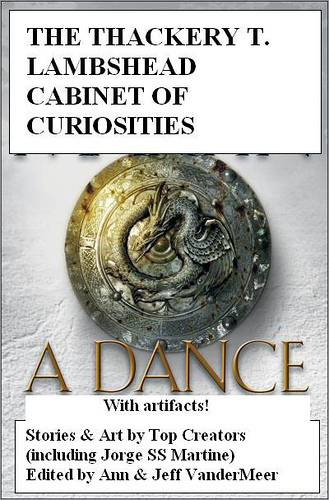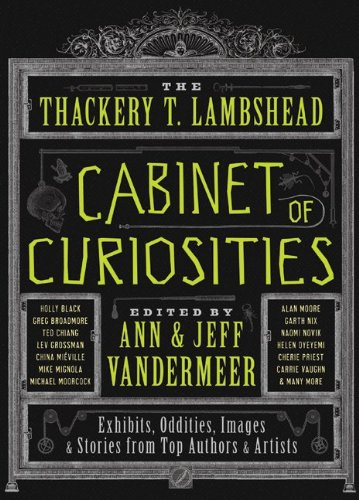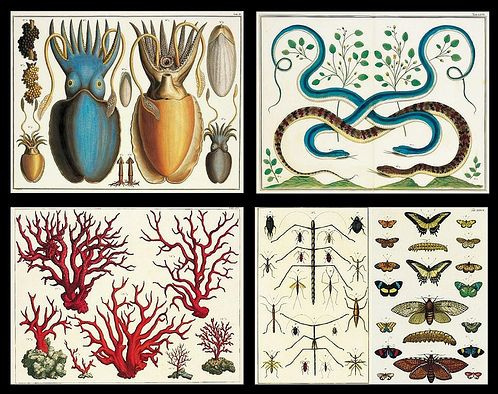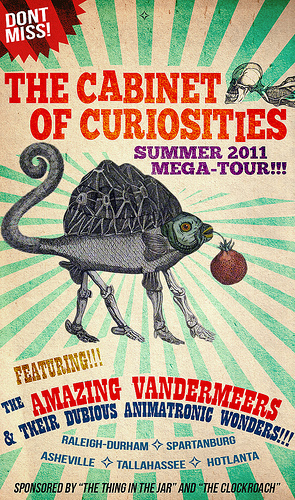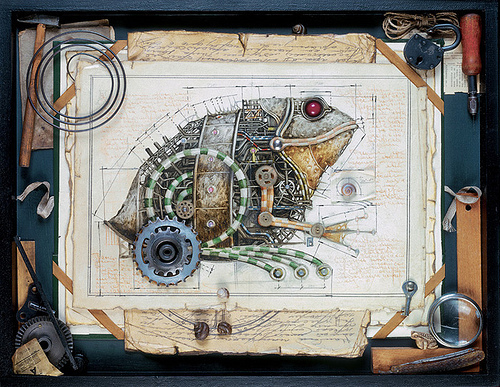Jeff VanderMeer's Blog, page 51
July 16, 2011
Movie: Nicolas Roeg's Bad Timing
One great thing about limited TV access while teaching here at Shared Worlds (Wofford College) in Spartanburg, SC, is that I'm spending my evenings reading and watching movies on Netflix. I've decided to go a little esoteric and catch up on some flicks that aren't exactly Hollywood blockbusters.
Case in point, Nicolas Roeg's Bad Timing, starring Theresa Russell and Art Garfunkel. It's got all of Roeg's signatures: unusual use of montage, unusual ideas about how to cut, frame, and bookend scenes. In this case, rather than at the service of a horror story (Don't Look Now) or a SF movie (The Man Who Fell to Earth), he uses these devices to film a script about a terribly mis-matched couple—Russell plays a kind of hedonistic soul who lives in the moment, and Garfunkel plays a psychologist who is attracted to Russell but is exasperated by her lack of commitment. The movie opens with Garfunkel accompanying Russell's character to the hospital in an ambulance, and then cuts back and forth between the past and present, often doing so several times in a few minutes without ever being confusing.
So there's the mystery of why Russell's character is going to the hospital, the mystery of the complexities of their relationship, Garfunkel's connection to the military, why Russell's character keeps going over the border into Czechslovakia…and, really, it all revolves around their personal story no matter how the film tries to throw you off with the idea that it might become some kind of political thriller.
Some scenes are absolutely wonderful in the way they exemplify why mastery of technique can result in increased emotional resonance. When a detective examines the woman's apartment after she's in the hospital, Roeg cuts back and forth between the detective and a scene between Garfunkel and Russell months earlier. So the detective, for example, peers around the corner of a room and then Roeg cuts to Garfunkel staring out from the bed like he's looking at the detective, but he's looking at Russell. And so on. It might seem artificial, but in fact Roeg is basically just operating the way memory can work, and the pointing out the ways in which we interact even when we think we aren't. The detective might not see the couple, but he can sense the ghosts of their arguments.
Cutting a scene like that jolts the viewer out of customary ways of seeing without seeming disjointed or random. The film editing here is very sophisticated and quite frankly made me want to weep thinking about your average run-of-the-mill Hollywood drama.
Bad Timing ironically enough runs out of steam the more provocative it becomes—which is to say there's a kind of decadent-era inevitability to what happens. Throughout Garfunkel is more than adequate, but it's really Russell who shines here. A couple of scenes in particular are painful to watch in the sense of seeing a person who seems genuinely wanting to break out of the kind of shackling roles people are sometimes made to play, in part because of the image of them in their friends' or lovers' heads.
It's not Roeg's best film, but it's intelligent, finely acted, and thought-provoking.
Movie: Nicolas Roeg's Bad Timing originally appeared on Ecstatic Days on July 16, 2011.
July 15, 2011
The Journals of Doctor Mormeck's Avatar–Entry #8
Note: Been reading this serialized long story/novella? Please support a full-time writer. Paypal to vanderworld at hotmail.com—much appreciated! Donations above $21 will entitle you to a free copy of initial anthology or stand-alone book appearance.
Living on a far-distant planet, Doctor Mormeck works for strange beings that might or might not be angels by conducting surveillance across a hundred thousand alt-Earths. When an avatar of Mormeck is sent to a war-torn winter city to investigate a mysterious Presence, the doctor will become embroiled an ever-widening conflict.
Archive is here, Journals of Mormeck, and first entry is here.
I can feel something inside of my body, inside of my brain. It scritches just the tiniest bit. As if there is something wanting to get out. There are visions here that no one should have to see. There are dislocations and torques and spaces poking through.
I've come from Pavlov and a drinking contest. I told him everything I safely could, everything and yet nothing. I'm drunk now. It's a kind of preservation mechanism. I'm raging up the side of broken bombed buildings in the moonlight, my claws half freezing off, brittle as icicles, and roaring and wanting to escape my skin, but even if I went back to being avatar in form, the Komodo's too far inside me.
I look down and sometimes see huddled figures around pathetic fires or men hunched against walls in as much clothing as they can put on and I don't feel removed from them. I see the cold eating into their features as if a sculptor were slowly etching them out of stone and I feel as if I am one of them, and the only difference is I have an escape plan of a kind. I see a soldier guarding a prisoner, one only marginally better off than the other, and I become both empathic and cynical, and want the image gone, cut out not just from my brain but from my optic nerve—to excise the entry point. As if that would solve anything at all.
The domed building awaits with its laughing skull obscured by ice, and I keep as far from it as I can. The dome's there, waiting. I can feel it like a pressure against my eyes. I can sense it like a thick cloying smell that's bitter and sweet and decaying. And I'll have to go back there. I'm going to have to infiltrate that. With this sense of being spied on in my own skull. Why take a shot of vodka when you can drink the whole bottle and control the drip of it into your system, let each drop spread out or not as you wish. I control my body if not my fate.
I miss Mormeck Mountain. I miss myself. No amount of scuttling across the skyline of a mortally damaged city in the snow will solve the hurt of that. (And: is there a shelf-life for an avatar? Can an avatar too long cut-off from its host…go mad?)
There has been a complication.
There is a city hidden under the city.
There is a city hidden in frozen bodies.
There is something dead that is still alive.
There is a mapping going on that should not be going on. There is a knowing that is a form of death as soon as it occurs, the reveal an instance sentence.
I'd be less coy, less obscure, but I'd rather fool myself awhile, not acknowledge what I think I know. It's easier that way, at least for now.
The Journals of Doctor Mormeck's Avatar–Entry #8 originally appeared on Ecstatic Days on July 15, 2011.




George R.R. Martin–and The Delighted States, Now with Lit Mags!
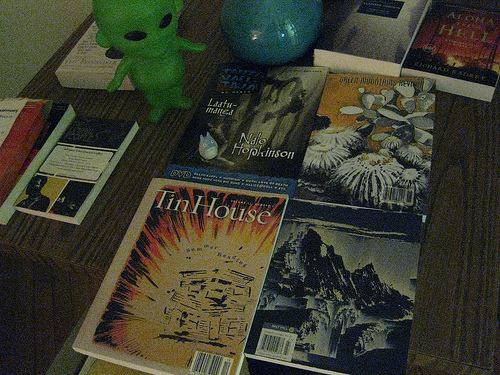 (What do lit mags have to do with Martin? You tell me.)
(What do lit mags have to do with Martin? You tell me.)
My review of George R.R. Martin's new novel was published by the LA Times on Tuesday. By late Tuesday, Reuters was reporting on the book and quoting me on the subject, except I never said that. I suppose I should say it here so as to make it true, but I won't. Even though I agree with the quote, and also did an Omni feature about the novel here. It's a great book. So much of a great book I spoofed it on Facebook as part of our Lambshead promotion (see SF Signal's great review of the Cabinet):
But mostly this post is about luring you in with "George R.R. Martin" in the title and then telling you about other things. (Maybe all of my informational posts will from now on include his name in the subject line…)
Like, Green Mountains Review, the latest issue of which has, in addition to great poetry and prose generally, a lot of translations in it. I can't guarantee that all of it has a speculative element, although at least one is a fairy tale, but is having a dragon plopped down in the middle of your narrative all that important? Isn't it more about the story? Hmmm? Anyway, here's the translation section. Those who argue about the need for lit mags, many of which are supported by universities, should think about how such funding can be a potent source of fund for translations…
–Aandaal—"Tiruppavai" translated by Ravi Shankar
–Eugene Dubnov—"Winds of Estonia" and "Sparse Snow Upon the Beach," translated by John Heath-Stubbs and Anne Stevenson, with the author
–Daniil Kharms—"A Fairytale," translated by Katie Farris.
–Vladimir Mayakovsky—"They Don't Understand a Thing," translated by by Katie Farris and Ilya Kaminsky
–Simona Popescu—excerpt from "Night and Day," translated by Adam Sorkin and Claudia Serea
Meanwhile, Tin House, which always has a great mix of fiction and nonfiction, has its summer reading issue out and on newsstands now. They were the ones who put out the Fantastical Women issue I blogged about back in 2007.
I also picked up the 27th issue of the intriguing Salt Hill, a literary journal with excellent fiction this time around by Brian Evenson and "On Voyage," a series of excellent short-shorts by the 2010 Calvino Prize winner Sharon White. This is some stunningly awesome surrealist/fantastical stuff by White–you gotta check it out. Not to mention great poetry in translation by Raul Zurita. You can order the mag right off of their website, too. Do it now.
Not to mention, the latest issue of my favorite mag I can't read, Tahtivaeltaja, is now out, featuring Nalo Hopkinson.
What does any of this have to do with The Delighted States, the book? Not sure, except I'm reading it right now and it is indeed putting me in a delighted state, along with the Martin and the lit mags mentioned above. Maybe it's all connected because all of it gives pleasure. Isn't that a good enough connection? I think so.


(Click image to find out more)
George R.R. Martin–and The Delighted States, Now with Lit Mags! originally appeared on Ecstatic Days on July 15, 2011.
July 14, 2011
Lambshead Cabinet: Win Jake von Slatt's Mooney & Finch Somnotrope!
Um, HarperVoyager is doing something incredibly cool in connection with the release of our antho The Thackery T. Lambshead Cabinet of Curiosities—and they're only able to do it because Jake von Slatt, one of our contributors, is a really nice guy. He's providing his machine-artifact the Mooney & Finch Somnotrope, created for our book, as the prize in a sweepstakes. That's right—you could wind up owning a von Slatt original, and all you have to do is buy the book!
What is a Mooney & Finch Somnotrope anyway? Well, we gave a photo of the artifact to Charlie Jane Anders, and she wrote this micro-fiction, included in the book:
Mooney & Finch Somnotrope – These sleep simulators have become rare artifacts—even though they were mass produced in the Mooney & Finch Sheffield facility, each one of them emerged as a unique object due to the pressures of the oneiric centrifuge. However, they were only sold for three months, prior to the first reports of somnambulance addiction and peripatetic insomnia. The idea of experiencing four or five hours of sleep within a mere few minutes held almost unlimited allure for the world's busiest captains of industry and harried matrons. But few were prepared for the intoxication of the Somnotrope's soothing buzz, the sheer pleasure of watching its central piston raise and lower, gently at first and then with increasing vigor, until your mind flooded with dream fragments and impression of having sailed to the nether kingdom and back, all in a few minutes. It only took a few unfortunate deaths for the whole line to be recalled. (Charlie Jane Anders)
Now, as is the case with several art pieces repurposed by the writers assigned to them, von Slatt had originally given the machine a working title and description to help him in conceptualizing it: "The other is a Bassington & Smith Electro-Mechanical Analog Brain, about as smart as a common house cat. It was built to manage the systems aboard an ocean liner and was salvaged from its wreckage. A rather predictable and foolish adventure, really. I mean, whose bright idea was it to put a cat in charge of a vessel that displaced 32,000 tonnes?"
Which just means you'd be winning two machines in one artifact! A Mooney & Finch Somnotrope and a Bassington & Smith Electro-Mechanical Analog Brain!
Lambshead Cabinet: Win Jake von Slatt's Mooney & Finch Somnotrope! originally appeared on Ecstatic Days on July 14, 2011.




The Journals of Doctor Mormeck (Mountain) (Stolen Document)
Note: Been reading this serialized long story/novella? Please support a full-time writer. Paypal to vanderworld at hotmail.com—much appreciated! Donations above $21 will entitle you to a free copy of initial anthology or stand-alone book appearance. Also, let me know you're still reading by posting a comment. Story context:
Living on a far-distant planet, Doctor Mormeck works for strange beings that might or might not be angels by conducting surveillance across a hundred thousand alt-Earths. When an avatar of Mormeck is sent to a war-torn winter city to investigate a mysterious Presence, the doctor will become embroiled an ever-widening conflict.
Archive is here, Journals of Mormeck, and first entry is here. All images by Sir Tessa.
I have been attempting to access the records of the laboratory on my head without Gabriel's knowledge. I'm storing here everything I uncover here, including this sample of an old intercepted communication from one reality to another. From one scientist to another. Suggesting…what? That some on the alt-realities know the truth? That there are other modes of travel beyond the bears? That Gabriel has been doing these experiments for a very long time, in many different places. What is Base 6? How does this relate. Are all animals inherently receivers or processors? I don't know the answers, and I believe one day I will have to talk to Gabriel directly…
Begin Transmission…[all words approximations translated by the {untranslatable word}]
1. Travelers still cross over in a one-to-one ratio with bioneered neuro-controllers that ease the transition from devouring and into contamination and reconstitution. Walking ghosts. Zombies. Blinded by the flow of silver. Processed at a blinding pace, but still they come from door after door, drawn by signals we cannot really hear. Do they know what awaits them?

2. Maybe it was microscopic. Maybe it was right in front of them. Millions of these sensors monitoring the golden strands have been strewn across a thousand alt-galaxies. Each filament attuned to the vibrations of a different kind of mind. Immersed in establishing the correct connections. When their work is done, they become brittle and wash up on a trillion beaches across worlds, across realities. Even angels can't track them all.

3. But some sensors need antennae that can roam free. The more unwieldy these antennae look the less they will be suspected. One millimeter of exoskeleton can receive ten trillion retained impulses and transmit them to another million sensors that then analyze the data.
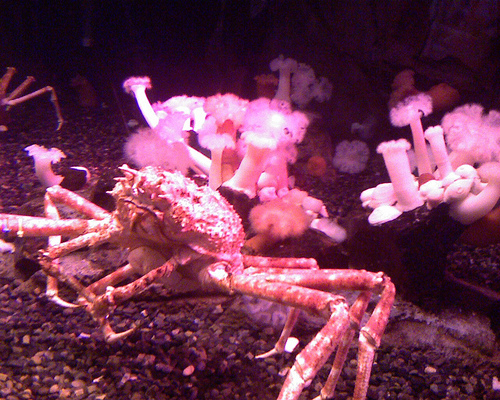
4. It appears that the travelers (some might call them refugees) thus persuaded are stored for a time with any manner of machine free-swimming through the corridors of the laboratory known as Base 6. There they breathe water as if born to it, and, of course, some were. Is there a choice still left for them at this point?

5. Within the Base 6 laboratory, ancillary devices known as sunspoilers and sunspotters sift through real-time information brought by the travelers. We do not know what they are looking for, nor how much time they have been given for the task. All we know is that they are close.
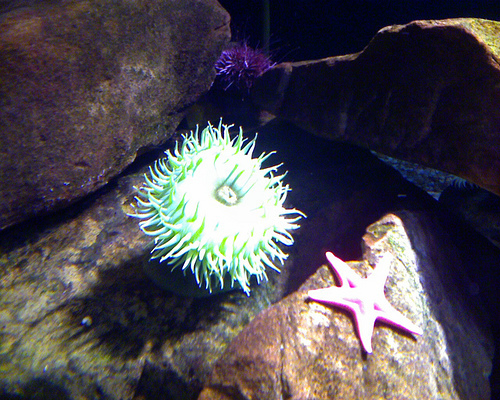
6. Once a certain amount of analysis has occurred, the travelers' brains are temporarily transposed with the gelatinous solution surrounding them in the chambers of the laboratory. This requires a sudden standing stasis on the part of the subject and transmogrifying the brain in question into a more ethereal form. Here, the act in progress, as the brain gracefully exits to the left from the body in the center.
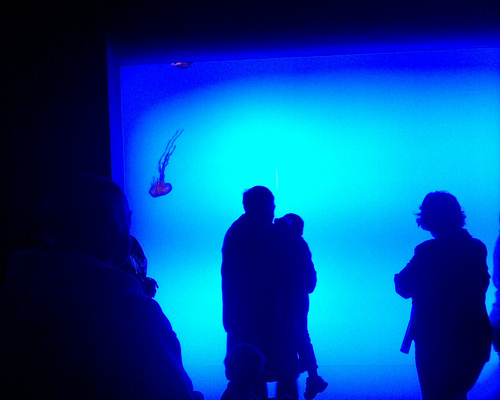
7. A close-up of a dislodged brain in ethereal form drifting through spinal fluid and amniotic fluid, several hours before re-engagement. The energy discharged from the tendrils will be vital to transposing the cross-dimensional diver (CDD), as will become clear soon.

8. The CDD prepares for the jump by building up momentum with the kinetic energy of its tail feeding directly into its enhanced brain.

9. Simultaneous with this action, the mental energy harvested from the visitors is channeled through thousands of connective synapse worms, their nether ends tethered in far distant potential galaxies crucial to the CDD's journey.
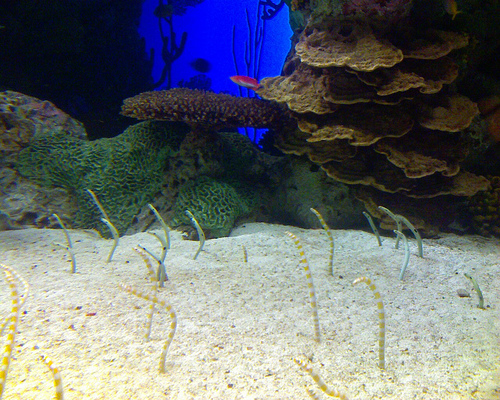
10. As the CDD approaches the critical speed to enter the parallel universe selected, it releases ballast in the form of discharge accumulated during prior jumps.

11. The Guardian, always alert during these moments, translates data into information relevant to space and time, parts of its nano-flesh shaking into and out of tides and wormholes that open as a result of its inquiries.
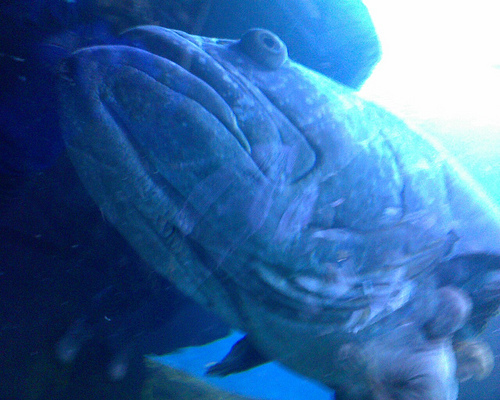
12. The CDD crosses into the parallel universe, where it will begin its harvest. A CDD can only survive a dozen such trips before it goes insane.

13. As soon as the CDD has crossed over, the Guardian stabilizes in our reality, creating a wall against any intruder that might think to take advantage of the small opening created by the CDD's wake.

14. In further support of these efforts, the Guardian generates silver-slips of deadly localized fragments of black holes to patrol the outer-most perimeter, and to escort the CDD upon its return.

15. Attuned to other states of being, the mogwah, meanwhile, shores up the cosmic radiance of our own reality against a different kind of intruder entirely.
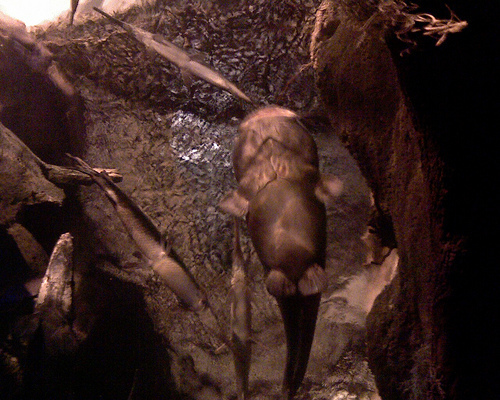
16. Working in a simulator environment within the laboratory, many researchers study the effect of the CDD's jump on our own existence. The more interference, the more the picture blurs and the colors become dull. Sometimes the effects can be cataclysmic, no matter the safeguards. And yet the price is small given the potential reward of continued life.

17. Finally, exhausted, driving data, possibility, and samples before and within it, the CDD returns, almost dead from the effort.

18. Sometimes the dissonance, the strain, is too much, and the cross-dimensional diver cannot keep its form, and then it will revert to a corporealness similar to a damaged version of the client brains provided by the immigrants.
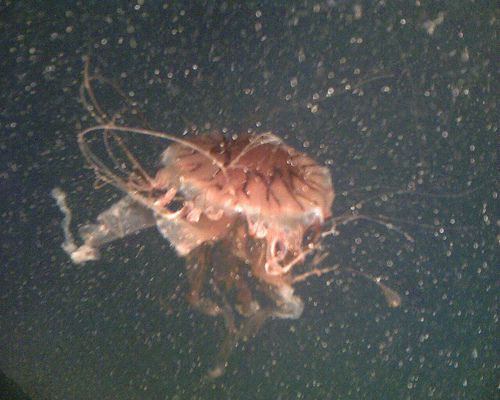
19. If this happens, then too the sunspotters and sunspoilers, even the synapse worms, are riven apart by the stress, and the laboratory is rendered temporarily blind until they can repair the damage.

20. Usually, however, the CDD retains its form and content jets out from it in a profusion of data that must be caught by the sunspotters

21. However, the most valuable of the materials brought back by the CDD are the off-loaded membranes that enhance the ability to peer into other worlds and realities without traveling there. Each unique and thus individual in their capacity and their reach, these membranes hold out the best hope for repairing the damage that will one day, perhaps soon, result in the death of our reality. This is the main reason for the CDD's dangerous missions.
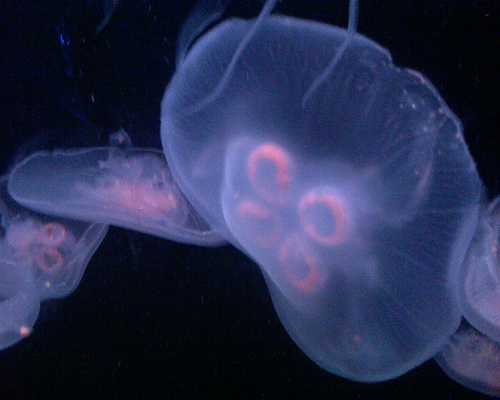
22. It is for this purpose, too, that the travelers, either consciously or subconsciously, are willing to go through the strangeness and agony of brain dissolution and recovery. For they will never be the same afterwards.

23. The mogwah and his minions will reassign the immigrants to somewhere new after they have been used. It is not clear if the mogwah is actually an angel in disguise.

24. This new life may be familiar and yet thrilling.

25. It may be unfamiliar and yet simple.

26. But the Guardian will never let them remember what came before. They will have only the new memories in keeping with their new reality. They will not remember the shining gates or the breaching of the cross-dimensional diver or the push of universes against each other like crashing waves. Only a hint of it. Only a passing image here, there, then gone.
[image error]


17. Perhaps this fragment of the past will even take the form of a glimpse of the laboratory's director, Gabriel, to whom CDD and Guardian and mogwah all ultimately report…and who sits there even now, pondering new solutions to the possible dissolution of our reality….
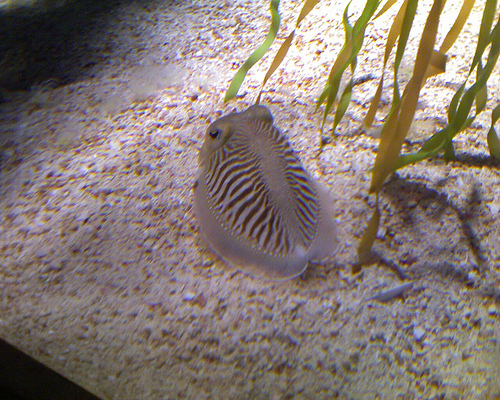
End Transmission
The Journals of Doctor Mormeck (Mountain) (Stolen Document) originally appeared on Ecstatic Days on July 14, 2011.
July 13, 2011
The Bestiary Anthology: Sneak Peek
Ann and I have (rather quietly) put together a unique new project over the past few month: a Bestiary with the imaginative working title of…Bestiary. In an A-Z format, with a couple extras, the anthology will contain all original fiction. Think of it as a cryptozoological text for the twenty-first century, although some entries go far back into history. (Ivica Stevanovic is on board as an artist.)
For this project we wanted to assemble the writers ahead of time and then sell the anthology, so a huge thank you to our contributors for being willing to send us material on such a speculative basis. The antho will make the rounds to editors in August.
Although we're still in the editing phase, we do now have our final line-up, revealed here in its entirety for the first time. We think it's a stellar group of writers. Certainly what we consider a kind of dream team, and in several cases our first opportunity to work with favorite writers who we hadn't yet had a chance to publish. It's a little overwhelming to think we have an original Michal Ajvaz—terrifically funny and pointed—and an original Vandana Singh and an original Karen Lord and Cat Valente and…well, if we keep going we'll wind up listing everyone!
A: "The Auricle" by Gio Clairval
B: "Bartleby's Typewriter" by Corey Redekop
C: "The Counsellor Crow" by Karen Lord
D: "Daydreamer by Proxy" by Dexter Palmer
E: "Enkantong-bato" by Dean Francis Alfar
F: "The Figmon" by Michael Cisco
G: "The Guest" by Brian Conn
H: "Hadrian's Sparrikan" by Stephen Graham Jones
I: "Ible" by Brian Evenson
J: "Jason Bug" by Joseph Nigg
K: "The Karmantid" by Karen Hueler
L: "The Liwat'ang Yawa and the Litok-litok" by Rochita Loenin-Ruiz
M: "Mosquito Boy" by Felix Gilman
N: "N—– (Bolus Barathruma)" by Reza Negarestani
O: "Orsinus Liborum" by Catherynne M. Valente
P: "Pyret" by Karin Tidbeck
Q: "Quintus" by Michal Ajvaz
R: "Rapacis X. Loco Signa" by L.L. Hannett
S: "Snafu" by Micaela Morrissette
T: "Tongues of Moon Toad" by Cat Rambo
U: "The Ugly-Nest Rat" by Eric Schaller
V: "The Vanga" by Rikki Ducornet
W: "Weialalaleia" by Amal El-Mohtar
X: "The Xaratan" by Rhys Hughes
Y: "Yakshantariksh" by Vandana Singh
Z: "Zee" by Richard Howard
&: "Ampersand" by Karin Lowachee
(Not shown: a creature whose name begins with invisible letter, written by an anonymous writer who is not one of the editors…)
The Bestiary Anthology: Sneak Peek originally appeared on Ecstatic Days on July 13, 2011.




Gio Clairval and Rachel Swirsky on the Lambshead Cabinet Anthology: Subversion!

(Brookline Booksmith in Boston made The Thackery T. Lambshead Cabinet of Curiosities it's pick of the week, along with a little-known novel about dragons by under-appreciatedcult author George R.R. Martin.)
I was remiss in forgetting to note two clever posts on our latest anthology by Gio Clairval, one giving some great background on cabinets of curiosity : "In Wunderkammer time of splendour, natural objects were called Naturalia, and considered the work of God, while artefacts were known as Artificialia. When we visit such exhibitions, the distinction appears odd. Boundaries are blurred. The fantastical rivals reason. Beliefs and scientific knowledge overlap. Art and sciences are blended together." The other post reveals just how much of a monster I am.
The Thackery T. Lambshead Cabinet of Curiosities, if you're joining us late, is a fully illustrated compendium of exciting stories and reproduced museum exhibits–an art book with over 70 images, a treasury of modern fantasy with work by over 85 creators like Holly Black, China Mieville, Michael Moorcock, Alan Moore, N.K. Jemisin, Rikki Ducornet, Garth Nix, Naomi Novik, Cherie Priest, Jan Svankmajer, Carrie Vaughn, Jake von Slatt, Charles Yu.
The awesome Rachel Swirsky is also a contributor, with a very clever, funny entry entitled "1943: A Brief Note Pertaining to the Absence of One Olivaceous Cormorant, Stuffed," in which she admits to a secret: "Readers who recognize me as a contemporary science fiction writer may be confused by my claims of visiting Dr. Lambshead in 1943. This seeming contradiction is the result of a rare [REDACTED FOR NATIONAL SECURITY REASONS]…You see, when I experience extreme [REDACTED]…my condition triggers [REDACTED] wherein…I [REDACTED] until I am [REDACTED], and must [REDACTED] upon the [REDACTED] of [REDACTED]."
In the account below, reproduced here for the first time, Swirsky reveals how she first met Dr. Lambshead…
How I met Dr. Lambshead
by Rachel Swirsky
In order to discuss the origins of my recent contribution to your collection of essays about that curious and almost mystical cabinet, it seems logical to return to the moment when I first met Dr.
Lamsbhead. (You must forgive any apparent contradictions in what I write below; as I mentioned in my earlier text, I remain invested in maintaining the illusion what I write here is fiction. A scattering of minor lies often proves the best obfuscation for a major truth.)
It was during American prohibition. Thackery was a young man or at least younger than he would be later in our acquaintance. He had recently visited the U. S. of A. and found an appreciation for the speakeasy aesthetic which he brought back with him to fair England where he threw a number of themed galas that aspired to Gatsby glamour.
At that time, I was visiting friends of my most recent mother's.
Through some benevolent connection–the social mechanisms of the upper classes always seem to be grinding their gears in one fashion or another–I was among those invited to Charleston in Chelsea.
There I was, in this dimly lit room, all spangled with some Englishman's conception of American patriotism–red, white, and blue taffetas billowing on walls strung with electric lights–a terrible fire hazard. I was fat then (as I am in this incarnation, though not the one between) and so the era's particular fascination with flat chests and flatter figures was especially awkward for me. All fringe and rouge, I played the wall-flower, toying with my knotted pearls, when a gentleman who I did not recognize (but who I would later learn was our host) approached my refuge.
He handed me a shot glass of bathtub gin–part of the speakeasy zeitgeist, I suppose, but oh so unfortunate; why would anyone voluntarily eschew good gin for alcohol that tastes not a little like turpentine? I drank the foul stuff anyway, hoping a little alcohol would go a long way toward improving the party. As I tipped back my head for the gulp and the groan, Dr. Lambshead leaned in, and with his lips brushing against the cartilidge of my ear, he whispered, "I know what you are."
The words burned down my throat with the gin. What did he mean? Was my secret really revealed? There, among the Marcel waves, and the gleaming saxaphones, and the girls in bobby socks?
I turned to look at him. The grin on his face was as bright and white as the electric lights.
I understood then that he truly had intuited my unique condition.
But I also understood that his motive was neither betrayal nor blackmail–but curiosity. Bold as the brass section, I handed back the drained glass, stained with my lipstick.
"Well," I said. "This party just got interesting."
Gio Clairval and Rachel Swirsky on the Lambshead Cabinet Anthology: Subversion! originally appeared on Ecstatic Days on July 13, 2011.
July 12, 2011
Karen Lord Has a Major Publisher in the US and UK!
I couldn't be happier to hear the news that Karen Lord has signed a two-book deal with Del Rey! And also has a major UK deal with Jo Fletcher! I loved Redemption in Indigo, Lord's first novel, and this is just great and wonderful. She also has an excellent piece in our forthcoming Bestiary anthology. Anyway, congrats to Lord, and to her agent Sally Harding, who is one of my favorites too.
Karen Lord Has a Major Publisher in the US and UK! originally appeared on Ecstatic Days on July 12, 2011.




Release Week: The Thackery T. Lambshead Cabinet of Curiosities and How You Can Get Involved!
Today our anthology The Thackery T. Lambshead Cabinet of Curiosities: Exhibits, Oddities, Images, and Stories from Top Authors and Artists is officially on sale, although we've gotten reports of sightings in the wild starting the end of last week. All this week I'll be posting original content here at Ecstatic Days, including material from contributors S.J. Chambers, Rachel Swirsky, and Caitlin R. Kiernan–as well as the story of how we found and acquired a piece by famous Czech animator Jan Svankmajer.
is officially on sale, although we've gotten reports of sightings in the wild starting the end of last week. All this week I'll be posting original content here at Ecstatic Days, including material from contributors S.J. Chambers, Rachel Swirsky, and Caitlin R. Kiernan–as well as the story of how we found and acquired a piece by famous Czech animator Jan Svankmajer.
How You Can Help!
If you like the anthology—an LA Times recommended summer reading selection—and want to support unique ideas like hybrid fiction-art books, here are some of the things you can do to help:
—Buy the book. It's currently selling on Amazon and elsewhere for a ridiculously low price for a fully-illustrated oversized hardcover. Buy it for friends. Buy it for family.
—Review the book. Blog, review site, or on a sandwich board in front of your local bookstore. Any mention, especially noting whatever you really liked about the book, helps immensely. And a limited number of additional review copies are available for review sites; email me at vanderworld at hotmail.com if interested.
—Review it on Amazon. Go to the Amazon sales page for the book and tell other readers what you liked about it. A quick and easy way to help get the word out and create interest.
—Make sure local booksellers carry it. The anthology seems to have a strong presence in bookstores, but you can always encourage booksellers who aren't stocking it. You can even tell them its by some of the same people who brought them The Steampunk Bible, which has done very well.
—Request it from your local library. Making sure your local library knows about the anthology not only increases library orders but allows multiple people to enjoy the book.
—Spread the word through twitter and facebook. Tell people about the anthology through social media, using one of the links below. Lots of excerpts have been posted in various places—choose your favorite.
—Come to the author events (more to be scheduled). We'll be having lots of fun, including telling tales out of school, so to speak. Current schedule here. (We should have at least one prominent West Coast event to announce soon.)
NOTE: Bloggers (non-contributors) who post the link to their mention of the antho in the comments thread will be in the drawing for a free copy of the book, signed by the editors, as well as a copy of the coffee table book The Steampunk Bible, along with a few surprises…
More Info on the Anthology
I think by now, if you've followed this blog, you know the idea behind this unique anthology, but in case you missed it…
After the death of the famous Dr. Thackery T. Lambshead at his house in Wimpering-on-the-Brook, England, a remarkable discovery was unearthed: the remains of an astonishing cabinet of curiosities. In keeping with the bold spirit exemplified by Dr. Lambs¬head and his exploits, HarperCollins now proudly presents fully illustrated highlights from the doctor's cabinet, including exciting stories of adventure and reproduced museum exhibits. The Cabinet anthology is a secret history of the 20th century, an art book with over 70 images, and a treasury of modern fantasy containing work by over 85 creators, including some of the genre's most exciting names. Suitable for both YA and adult library collections.
Contributors include Holly Black, Greg Broadmore, Ted Chiang, John Coulthart, Rikki Ducornet, Amal El-Mohtar, Minister Faust, Jeffrey Ford, Lev Grossman, N.K. Jemisin, Caitlin R. Kiernan, China Mieville, Mike Mignola, Michael Moorcock, Alan Moore, Garth Nix, Naomi Novik, James A. Owen, Helen Oyeyemi, J.K. Potter, Cherie Priest, Ekaterina Sedia, Jan Svankmajer, Rachel Swirsky, Carrie Vaughn, Jake von Slatt, Tad Williams, Charles Yu, and many more. Eighty-five in total!!
Links to Unique Content!
Here are links to some of the coverage so far, with more planned on at the Huffington Post, SF Signal, Suvudu, Fangoria, and many, many others.
Kirkus Reviews–Exclusive Mike Mignola image and Lev Grossman excerpt
Amazon's Book Blog–Exclusive Mike Mignola image and Cherie Priest excerpt
Barnes & Noble Book Club–Rave review by Paul Goat Allen
i09—A table of contents feature with exclusive Greg Broadmore image
Weird Tales—My lovely co-editor talks about the more macabre side of the cabinet anthology, with excerpt from stories by Kiernan and Michael Cisco and Aeron Alfrey art.
Weirdletter—A view from Italy
Ecstatic Days—Right here on my blog I've posted an exclusive excerpt with commentary from Reza Negarestani (with China Mieville art)and a disgrunted artifacts image created by Rikki Ducornet.
Contributor Posts—Posts by contributors have included interesting glimpses into the cabinet by artist Aeron Alfrey, artist John Coulthart (with many images), writer Amal El-Mohtar, and writer Jayme Lynn Blaschke.
* Note: I stole some of the general "help out" info from Cat Valente's livejournal.
Release Week: The Thackery T. Lambshead Cabinet of Curiosities and How You Can Get Involved! originally appeared on Ecstatic Days on July 12, 2011.




July 11, 2011
Secret Lives Collection: Now Available for Kindle and Nook
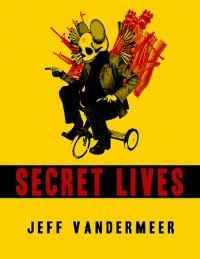
The latest Cheeky Frawg e-book, my Secret Lives, is now available on Amazon for Kindle and Barnes & Noble for Nook. it debuted with Weightless Books a couple of weeks ago. This is the mightily affordable version of the collection you could only buy as a $35 limited edition before.
"A collection of unique short fictions by World Fantasy Award winner Jeff VanderMeer which have previously available been only in a signed, limited, numbered edition. These stories, praised by K.J. Bishop and Liz Williams, take the facts of real life fantasy readers and uses them as the starting point for startling, funny, and rapturous secret lives. Discover a man obsessed with a mechanical duck, a strange mascot, a person who is a portal, a priest battling a shark, and much more.The secret lives of librarians, doctors, lawyers, university students, bank tellers, sex shop clerks and dozens of others are revealed for the first time. A luminous little book meant for dipping into one secret life at a time."
Secret Lives Collection: Now Available for Kindle and Nook originally appeared on Ecstatic Days on July 11, 2011.






